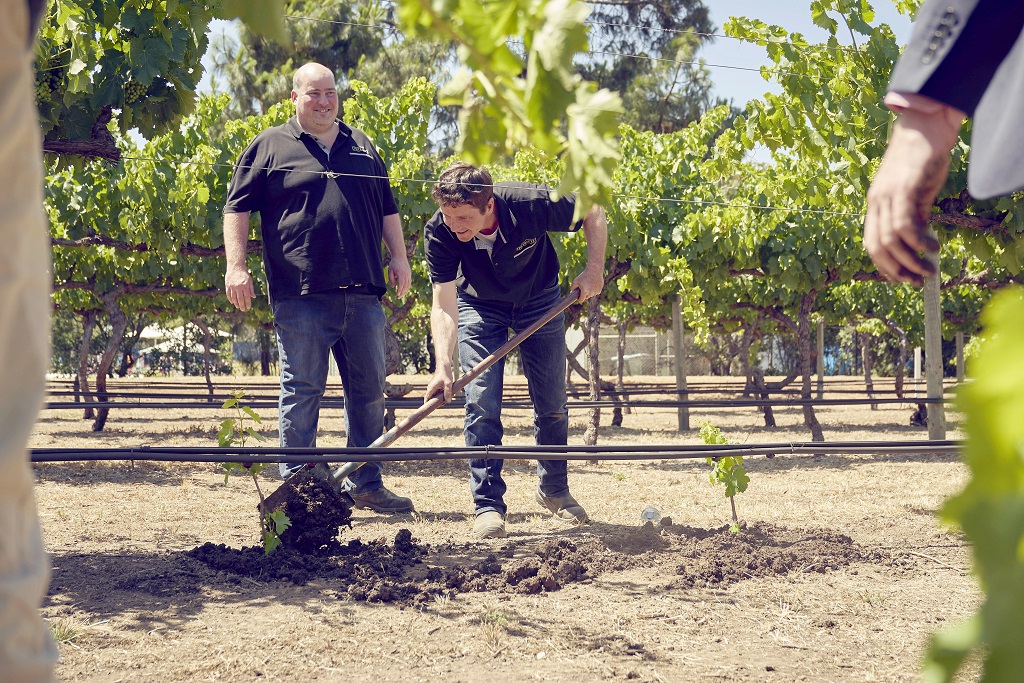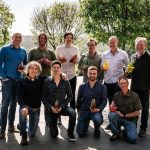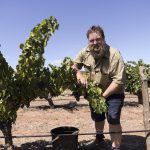Most vineyards are located outside the hustle and bustle of the ‘big smoke’, but for a handful of producers, suburbia is home. For the most part, these vineyards had the urban sprawl built around them.
Journalist Samuel Squire caught up with Patritti Wines’ winemaker to discuss how the vineyard site in Adelaide’s south survived the transition and continues to thrive.
Geographical locale has long determined the region a given wine may represent, whether it’s a Barossa Shiraz, or a Hawke’s Bay Sauvignon Blanc. This is what the industry refers to as ‘terroir’ – the complete natural environment in which a particular wine is produced.
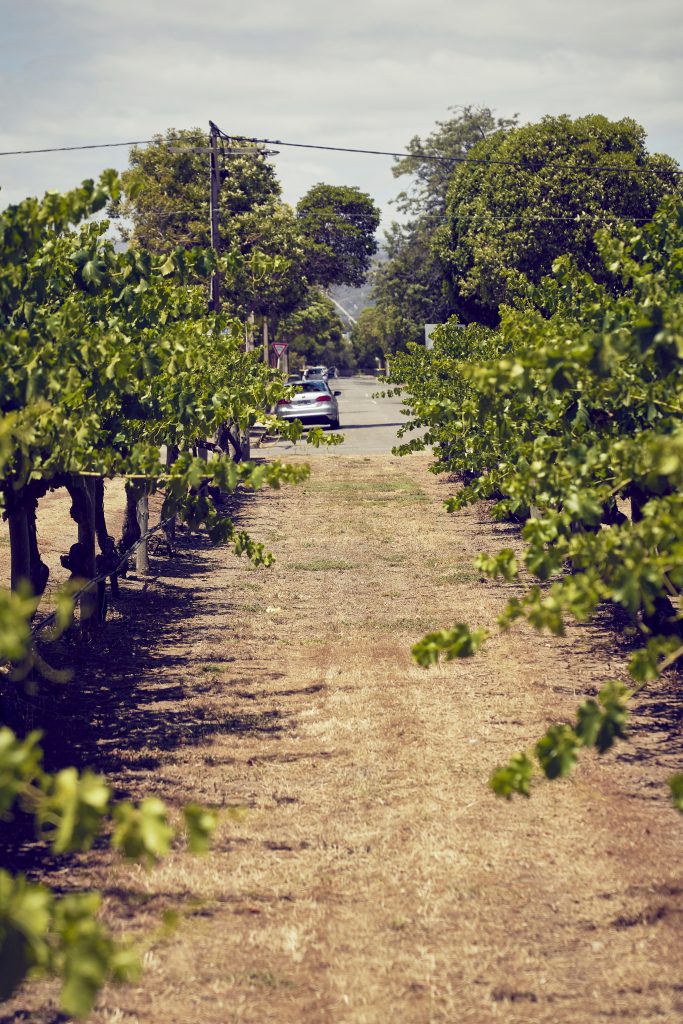
In 1920s Adelaide, Giovanni Patritti – born in vermouth country in Piedmont, Italy – landed as one of the first Italian migrants to South Australia on a journey he thought would take him to America to meet his sister.
Instead, he landed in Port Adelaide.
A short time after landing in Australia, he began to lease vineyards in the district of Brighton, 15 kilometres south of Adelaide’s CBD, which is now the City of Marion, and by the late 1920s, he had established Patritti Wines.
Vineyards in urban environments are a rare sight these days, as city populations expand and large land lots surrounding them become housing developments.
Aside from the iconic Penfolds Magill Estate vineyard, situated just a few minutes’ drive from the Adelaide CBD, Patritti Wines’ Marion vineyard is one of these rare sites. Coincidentally, the City of Marion used to be referred to as the ‘Garden of Adelaide’, which makes having a vineyard located there quite fitting.
Patritti winemaker James Mungall says the vineyard itself is over 100 years old and is part of one of the last operational urban wineries in the district.
“The current Patritti winery site was originally part of the Brighton area up until it was first developed for housing in the late 1950’s,” he said.
“The suburb is now called Dover Gardens, a suburb of Marion around 15km from the Adelaide CBD.
“The lands original use was as a dairy farm from the 1840’s up until around 1900 when it’s believed the first vines were planted on the site.”
Mungall says it’s great to still be able to make wine “from our founding region” in ‘Adelaide’s garden’.
“We are honoured to be custodians of the council owned vineyards as they are such an important link to the viticultural and agricultural history of the Adelaide area,” he said.
What’s different?
Mungall says that, even with the historical spread of suburban expansion around the vineyard, there isn’t much difference between an urban and rural vineyard because they were established prior to the city’s encroachment.
However, he mentions that there are, perhaps, some additional challenges posed by the now-urban vineyard’s surrounding populous and the city environment
“The [urban vineyard] sites are all remnants of commercial plantings that were once part of an agricultural region when they were established.”
“Like our winery, they too have been engulfed by the urban sprawl later in life, so really the vineyards themselves are no different.
“The major difference is with managing the vineyards in urban areas with challenges including moving or bringing equipment to site, limited access, noise and chemical use, bird pressure and hoping the local community doesn’t remove too many leaves for their homemade dolmades.
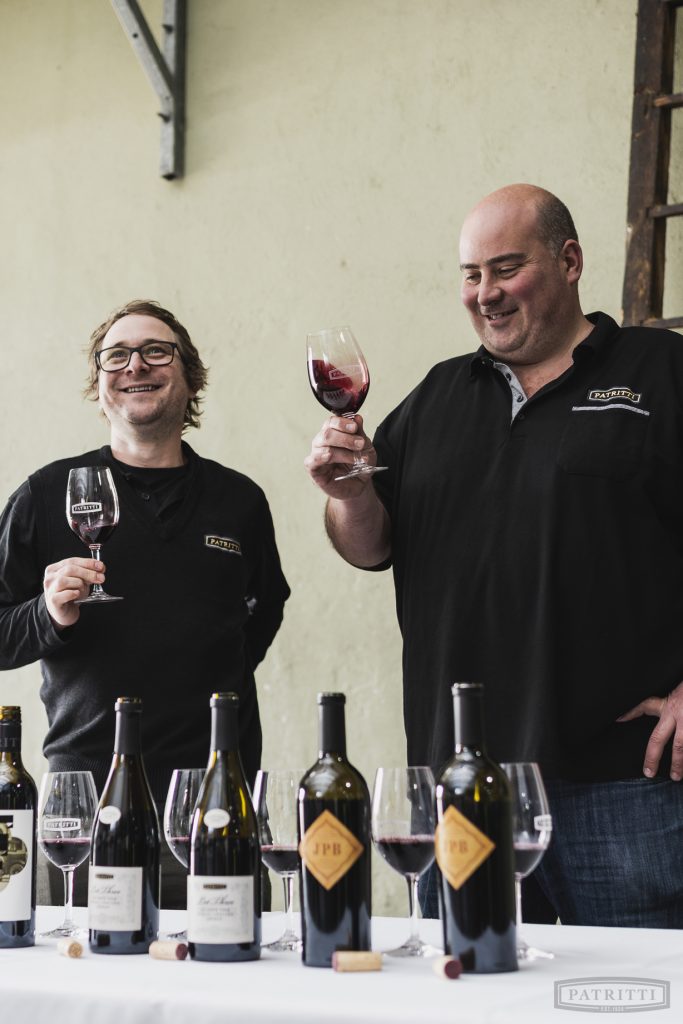
“The Grenache and Shiraz parcels seem to ripen at least two weeks earlier than our McLaren Vale vineyards, which could possibly be supported by the heat retention in the surrounding infrastructure.”
Mungall says the Patritti family business has seen its fair share of transformation over the years.
“Our founder, Giovanni Patritti, arrived in Port Adelaide in 1925, and in 1926 he leased the land and established his wine business,” he said.
“As an Italian migrant, because of the national security land transfer regulations, it wasn’t until 1947 the same year the property was connected to electricity that the Attorney-General’s department in Canberra approved the land transfer so Giovanni could purchase the land.
“By this time, the family was making 45,000-50,000 gallons of wine per annum on the site. By the late 1950s the urban sprawl had reached the winery and vineyards with the property soon surrounded by houses.
“Within a few years with no land set aside for education the Patritti vineyards surrounding the winery were compulsory acquired so a school could be built,” he continued.
A living link
Mungall says the winemaking heritage of the Marion region lives on as a direct, historical link through the City of Marion-owned vineyard sites that remain today.
“Just as we are the last link to the winemaking past of the Marion region, these vineyards are a living link to the previous use of the land which supported various forms of farming for over 120 years,” he said.
“A lot of people struggle to understand and comprehend the agricultural history of the now urban area and these vineyards certainly help to tell the story.”
Plantings of two of the five varieties, Pedro Ximenez and Palomino, are now quite uncommon, according to Mungall.
He says it is “quite interesting to work with old varieties that were once a common part of our grape intake”.
“The Grenache and Shiraz parcels are certainly unique in character and are easily recognised in the winery.
“The vines were originally planted in the region because it was a rich fertile flood plain so the vines can show excess vigour in higher rainfall years, but we feel any potential negative effects of the high fertility on the wines are offset by the vine age.”
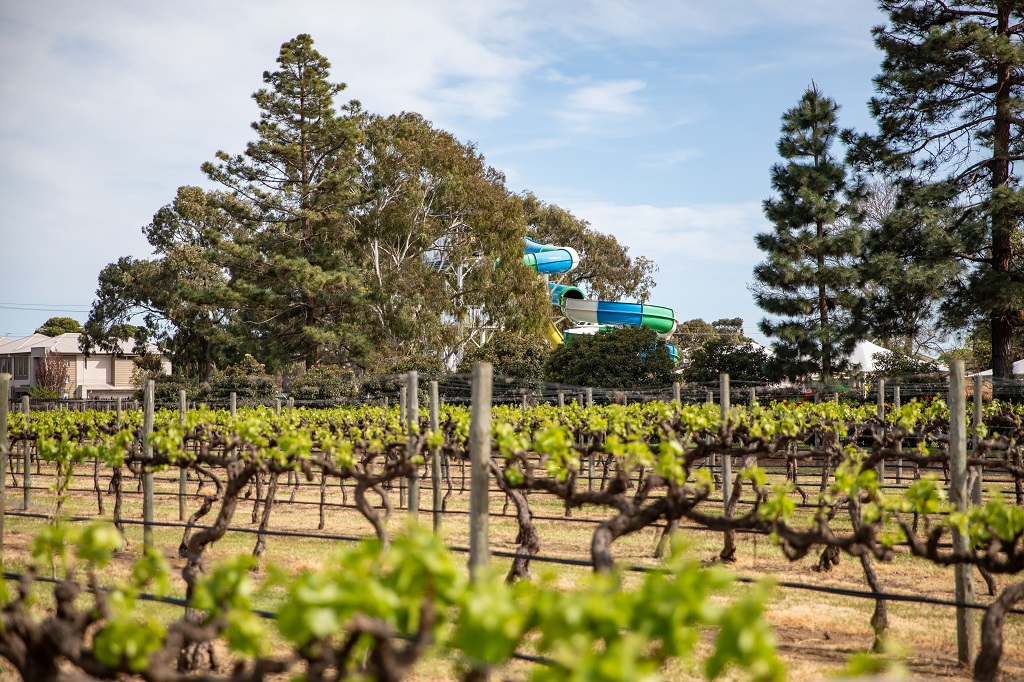
The wines made from the Marion vineyard are labelled as part of the Adelaide G.I (geographical indication), but Mungall says Patritti also labels them as hailing from Marion “to try and make the consumer aware that they are made from grapes grown in an urban area as the Adelaide geographical region is large and also includes rural vineyards”.
Survival of rarity
The winemaker has recognised that urban vineyards are an endangered breed that can come under threat from urban expansion, but adds that, so far, the historic Marion vineyard sites are safe and sound.
“By the 1970s just about all of the local vineyards were lost to the urban sprawl so really they haven’t survived."
James Mungall
“Being part of open/recreational areas, the three remaining sites [including two additional lesser known sites at Oaklands Estate Reserve and Warriparinga] have survived development and are not under threat at this point in time.
“They have also come to the point in their lives where the surviving vines are respected for their age and historical significance and it is widely recognised that they should be preserved.
“We have recently installed and replaced irrigation and trellising as well as replanted missing vines, so there is no reason why the vineyards cannot survive for future generations.”
This article was originally published in the February 2021 issue of the Australian & New Zealand Grapegrower & Winemaker. To find out more about our monthly magazine, or to subscribe, click here!
Are you a Daily Wine News subscriber? If not, click here to join our mailing list. It’s free!
